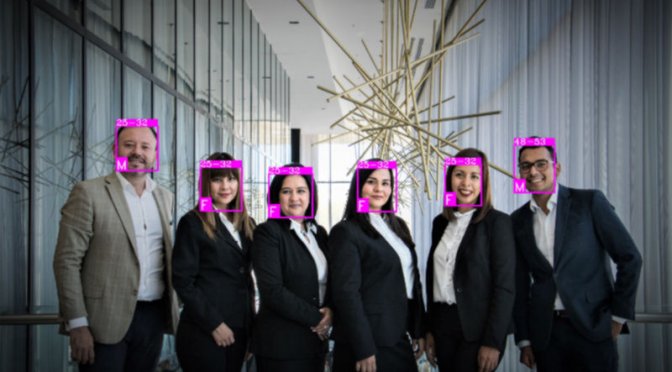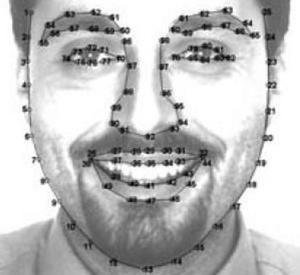
The Biometrics industry has evolved to a level where it is now driven with Artificial Intelligence and advanced neural networks. Moreover, the reach of this technology has grown from restricted national security zones to every person’s smart device. Facial recognition biometric systems have garnered great attention in recent times. However, vendors in the market are offering facial recognition features at varying levels. Some are very simple and merely match the photo on a 2-dimensional plane, while others are so complex that they measure the depth of the face. Despite the existence of so many facial recognition systems there are some key aspects of this technology prospective customers need to know in order to see through the marketing hype and tell the vendors apart.
To help you out, here are seven questions that you must consider prior to selecting face recognition system for developing your solution.
 When this technology first came out, it relied on factors like facial points (at most 90) or distance between the eyes to distinguish a face. The number of such points would indicate the superiority of the system. Users were comparing such aspects back then. These are outdated by modern standards. They are prone to failure easily. If you do not believe us, try facing a primitive facial recognition scanner while keeping your eyes closed. You will find that the scanner will not be able to recognize the face accurately. Another issue with old systems is that they are not robust to user’s glasses, mood and lighting.
When this technology first came out, it relied on factors like facial points (at most 90) or distance between the eyes to distinguish a face. The number of such points would indicate the superiority of the system. Users were comparing such aspects back then. These are outdated by modern standards. They are prone to failure easily. If you do not believe us, try facing a primitive facial recognition scanner while keeping your eyes closed. You will find that the scanner will not be able to recognize the face accurately. Another issue with old systems is that they are not robust to user’s glasses, mood and lighting.
Modern state of the art facial recognition systems do not rely on facial points or other eye distance. Almost all state of the art biometric algorithms are operating with deep neural networks. A Deep neural network is able to mimic the complex pattern recognition capabilities of the human visual cortex. This way, it is able to deliver almost human-level precision in face recognition.
Any manufacturer who claims that one does not have to rely on neural networks is not being truthful according to experts.

Before proceeding with the answer to this question, one should understand the need of a good ML framework. Here is a list of features that affect its functionality.
In a majority of cases, the reply to this question is going to be an open source framework as developing a custom framework is a very challenging task. In addition, without expert developers, the system can be slow due to huge amount of computations. This does not mean that people do not use heavy frameworks at all. Check out Face++, the platform for the world’s biggest face-recognition technology, which already has hundreds and thousands of registered users from 100+ countries. The firm has already established face recognition, in the world of cloud technology solutions, to a completely new level. Another example is that of DeepSight SDK, which has also utilized C/C++ deep learning frameworks to create an offline system for simplifying face identification.
The need of sophisticated and expensive cameras is only required for outdated algorithms. Why spend $5,000 to $7,000 when one can do the same with the help of a cheap IP camera worth $400 to $1000? Algorithms for identifying a face that run using neural networks do not require expensive high-tech cameras. Their robustness to an individual's mood and face expression, lighting and noise means that the technology works irrespective of camera qualities, which is why even a webcam will do the trick.

Also, older systems that rely on special cameras require the user to go through a set of rigid motions in order to capture the face properly for processing. This offsets the convenience of using a facial biometric system in the first place! Deep learning methods are extremely flexible in this regard.
Not all services can work remotely. Think of an airport terminal; the need of an on-premises face recognition platform is a necessity in such a zone. Vendors who sell face identification software may market the technology by saying that it is a self-adapting technology based on machine learning, etc. However, how many users actually know the process involved behind the sold software? How the CNN or neural network-driven algorithms work in the identification system? Are the users aware of the computation power involved for running the algorithms?
One should understand that ignoring the technology involved in the system is not prudent. The user should at least understand the requirements regarding the recognition software. This may also be helpful in a situation, where on-premise services from the vendors are not available. In fact, the user should have basic knowledge of machine learning algorithms before choosing the software for a better solution. You may never know when there is a need to fix the system as it is still at a growing stage and is not flawless.
The Proof of Concept (PoC) is an important factor that determines whether the purchased software operates based on real-life applications or not. Thus, it is important that one test the vendor’s software – in parallel, if possible. Please note that an efficient product will not require months of assessment for obtaining PoC. A capable software may show us results in merely a few hours.
Good firms will test the software and provide you with the Proof of Concept quickly. Perhaps it is because of the use of automated processes that makes things faster. Furthermore, before purchasing, you can ask for standard benchmarking assessments for testing accuracies. One such test is the Labeled faces in the wild (LFW) evaluation that is done for facial recognition. You may not be aware whether your purchased biometrics software fulfills your requirements or not. So, you should ask for a demonstration for learning the abilities and weaknesses of the system.
Fiscal investments in a software would require you to be extra cautious. You can start with learning whether the cost of the biometrics software is justified or not. No doubt a software that features deep neural networks and machine learning algorithms is going to cost a decent sum.
You may want to ask the supplier if the product costs are inclusive of both hardware and software features. To facilitate it properly, you can ask the vendor to break down the charges for the features separately so that there is a clearer view of what you are about to pay.
When choosing the biometrics software, it is important to choose the cloud storage option, if available. Offline storage, which usually involves managing custom databases on hard drives, becomes expensive over time. On the other hand, cloud storage does away with having to develop and maintain the infrastructure. Hence, it is cheaper in the long run.
Last, but not the least, you should inquire whether the purchased software has any recurring costs accompanying it or not. Sometimes there are periodic charges for maintenance, security, etc. These may or may not be chargeable by the supplier. You may also want to inquire about software updates for the deep learning models so that you have an upgradable identification system. So, inquire beforehand.
One should note that no product is impeccable. Similarly, the biometrics technology, which is at a budding stage, may encounter certain glitches or bugs while operating. Thus, it is important that any such information related to issues be clarified to the user beforehand. Such software go through multiple testing phases at times. This is where its limitations are recorded.
So, the vendor should let the user know of such weaknesses and provide with prompt maintenance services for countering failures of the complete arrangement. The user should also try to understand that software might result in bugs from time to time. However, if the fault is major and that occurring immediately after purchase, then it would be better to skip buying such a product.
From a technological aspect, the capabilities of a system to successfully recognize multiple faces simultaneously is inevitable. A prudent application of this technology can be seen in the law enforcement system where identifying a face is of high significance. While not all countries, some have already set up a system where any person committing crimes and breaking the law can be caught. These systems are also based on deep learning algorithms.
No doubt, face recognition technology will be quite helpful in locating the identities of millions of people around the world. But, what if someone considers it a method of trespassing their privacy? A solution to such a confusion is that there should be strict guidelines about this technology and its usage. One can use this system for personal or commercial security as long as there are certain rules to it. That is how people will trust this technology and accept it in the society.
Biometrics in today’s world is an advancement that we all had been waiting to use. It has reached our pockets, which is a huge step in the field of AI. It is quite possible that a computer will be able to recognize and talk to a human naturally someday. Until that time, we ought to apply this technology in our daily lives to test its capabilities and limitations to the fullest.